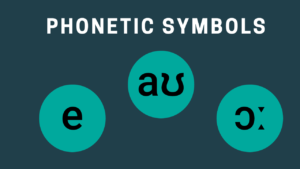Phonetic Symbols (1)
This article, “Phonetic Symbols (1)” focuses on five symbols: /f/, /tʃ/, /ɜː/, /ə /, and /n/, which represent unique melodies of sounds.
No products in the cart.

This article, “Phonetic Symbols (1)” focuses on five symbols: /f/, /tʃ/, /ɜː/, /ə /, and /n/, which represent unique melodies of sounds.

“Phonetic Symbols (2)” discusses the importance of these phonetic symbols in spoken English: /ɔɪ/, /ŋ/, /eɪ/, /θ /, /ʃ /, and /iː/.

Phonetic symbols help learners understand the intricate sounds that form our words. This article explores three symbols: /e/, /aʊ/, and /ɔː/.

Phonetic symbols help learners decode the intricacies of sounds. This article, “Phonetic Symbols (4), focuses on the following symbols: /uː/, /r/, /q/, /əʊ/, and /g/